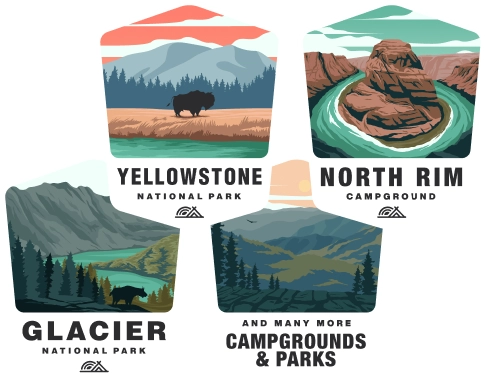Camping at Joshua Tree National Park
Introduction to Joshua Tree National Park
Joshua Tree National Park is a vast protected area in southern California, known for its rugged rock formations and stark desert landscapes. Named after the Joshua trees (Yucca brevifolia) native to the park, it covers a land area of approximately 800,000 acres and spans two distinct desert ecosystems, the Mojave and Colorado.
Best Time to Visit
Weather Considerations: The best time to visit Joshua Tree is during the cooler months, from October to May, when the temperatures are more comfortable for camping and hiking. Summers can be extremely hot with daytime temperatures exceeding 100°F (38°C).
Seasonal Highlights:
- Spring: You can see wildflowers blooming.
- Fall: Pleasant temperatures and fewer crowds.
- Winter: Cooler temperatures, possibility of frost and rarely, snow.
Camping Options
Campgrounds: Joshua Tree National Park has several campgrounds, offering a mix of reservable and first-come, first-served sites. Popular campgrounds include Jumbo Rocks, Hidden Valley, and Black Rock. Amenities vary but usually include pit toilets and picnic tables, with limited or no access to water.
Backcountry Camping: For a more rugged experience, you can opt for backcountry camping which requires a free permit that can be obtained at visitor centers or trailheads.
Camping Reservations
- Reservable Sites: Reservations can be made through the National Park Service's reservation system, typically up to 6 months in advance.
- First-Come, First-Served: If you're unable to secure a reservable site, arrive early, especially on weekends or holidays, to secure a first-come, first-served site.
Wildlife and Safety
- Desert Creatures: Be aware of wildlife such as snakes, spiders, and scorpions. Also, ravens and other animals will scavenge food, so store it properly.
- Hydration: Carry plenty of water; the arid desert environment can lead to dehydration quickly.
- Stay Cool: Use sun protection and plan activities during cooler parts of the day.
Park Rules and Regulations
- Stay on Trails: To protect the fragile desert ecosystem, always stay on designated trails.
- Leave No Trace: Pack out all trash and follow Leave No Trace principles.
- Fire Regulations: Check for current fire rules. Wood and ground fires may only be allowed in designated fire rings.
- Quiet Hours: Quiet hours are typically from 10 pm to 6 am in campgrounds.
Visitor Centers and Information
Visit one of the park's visitor centers, such as the Joshua Tree Visitor Center or the Cottonwood Visitor Center, for maps, information, and to pay the entrance fee. Staff can provide updates on trail conditions, water availability, and other important information for a safe and enjoyable visit.
Conclusion
Camping in Joshua Tree National Park can be a remarkable experience if you plan accordingly. Always check the park's website or contact the park directly for the most current information on campground availability, weather conditions, and any travel advisories or restrictions.
